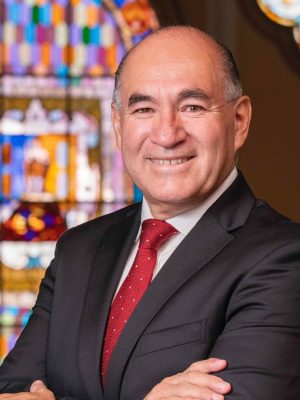San Luis Potosí, Mexico
General Information
Administrative status
Capital of the State of San Luis Potosí
Camino Real de Tierra Adentro
Registration Year
2010
Historical function
Mining industry route that has fostered the socio-economic and cultural development of the territories it crosses
Location and site
The city of San Luis Potosí is crossed by the Camino Real de Tierra Adentro, which was the Royal Inland Road, also known as the Silver Route. The inscribed property consists of 55 sites and five existing World Heritage sites lying along a 1400 km section of this 2600 km route, which extends north from Mexico City to Texas and New Mexico, United States of America. The route was actively used as a trade route for 300 years, from the mid-16th to the 19th centuries, mainly for transporting silver extracted from the mines of Zacatecas, Guanajuato and San Luis Potosí, and mercury imported from Europe.
Urban morphology
The impact of the road was enormous in terms of social tensions as well as ultimately social integration between the many people that came to be involved in the economic development. The structures in the property together reflect some aspects of this interchange of ideas and people along the southern stretch of the road.
Registration criteria
Criterion (ii): The Camino Real de Tierra Adentro became one of the most important routes to bond the Spanish Crown with its northern domains in the Americas. Along the southern part of the route is a collection of sites related to work in mines and haciendas, merchant trading, military, evangelism and the administrative structure designed to control the immense territory from the Spanish metropolitan hub, adapted to the local environment, materials and technical practices, that reflect an outstanding interchange of cultural and religious ideas.
Criterion (iv): An ensemble of sites along the southern part of the Camino Real de Tierra Adentro, including examples of buildings, architectural and technological ensembles, illustrate a significant stage in human history – the Spanish colonial exploitation of silver and the transformation of associated rural and urban landscapes.
Historical reference
- The Camino was an extraordinary phenomenon as a communication channel. Silver was the driving force that generated the wealth and commitment of the Spanish Government and the will of colonists to ‘open up’ the northern territory for mining, to establish the necessary towns for workers and to build the forts, haciendas, and churches.
- The outcome of this highly profitable process was the development of mines, and the construction of the road and bridges, the establishment of multi-ethnic towns, with elaborate buildings that reflect a fusion of Spanish and local decoration, an agricultural revolution in the countryside centered on large hacienda estates with churches, and the movement of peoples up and down the road, facilitated to a great degree initially by settlements of muleteers, all of which led to the development of a distinctive culture along the route.
Photos

News
Contact

Sr. Enrique Francisco Galindo Ceballos
Presidente Municipal
H. Ayuntamiento de San Luis Potosí
Av. Salvador Nava Martínez 1580, Col. Constitución
San Luis Potosí, S.L.P., México
78380
444 834 5400
enrique.galindo@sanluis.gob.mx
Sra. Claudia Lorena Peralta Antiga
Directora de Turismo Municipal
H. Ayuntamiento de San Luis Potosí
Jardín Hidalgo N° 5. Palacio Municipal
San Luis Potosí , S.L.P., México
78000
4446579282
direccion.turismo.mpioslp@gmail.com



